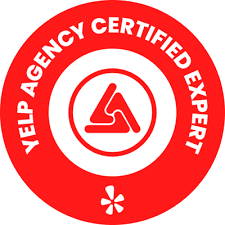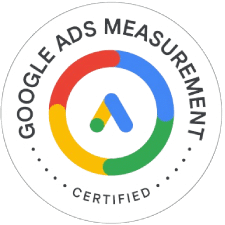Social media has transformed how businesses connect with customers. What once began as a platform for personal expression has evolved into a powerful marketing tool that can influence purchasing decisions, shape public opinion, and drive consistent revenue. Yet, amid ever-changing algorithms and increasing competition, many businesses still struggle to unlock the full potential of social media marketing.
Success in this arena doesn’t come from luck or going viral; it requires clarity, consistency, strategy, and ongoing refinement. We’ve worked with hundreds of clients on Search Engine Projects to optimize their social presence and generate tangible business outcomes. In this in-depth guide, we’ll explain exactly what it takes to thrive on social platforms and stay ahead of the curve.
1. Deep Audience Understanding
The cornerstone of social media success is understanding who you are trying to reach. Generic messages don’t convert. Instead, brands must understand their audience’s lifestyle, behavior, pain points, and goals.
Think beyond demographics. What are your audience’s motivations? What platforms do they frequent—and when? What type of content do they engage with?
Example:
A luxury skincare brand will attract an audience interested in premium ingredients and wellness. Their followers may respond better to educational content on routines and testimonials than to meme-style content.
How to Do It:
-
Analyze customer data from past purchases and Google Analytics.
-
Use platform analytics to see which content performs best.
-
Conduct surveys or polls directly on your social platforms.
-
Monitor competitors’ comment sections to spot unmet needs.
2. Strategic Platform Selection
Spreading your efforts too thin across every social media platform is ineffective. Instead, businesses should identify where their target market is most active and which platforms align best with their content strengths.
Example:
A personal injury law firm might benefit most from educational Facebook video content and LinkedIn articles for professional credibility. On the other hand, a boutique clothing brand should focus on Instagram and TikTok, where visual appeal matters most.
How to Choose:
-
B2B: LinkedIn, YouTube, Facebook
-
B2C Lifestyle Products: Instagram, TikTok, Pinterest
-
Local Services: Facebook, Nextdoor, Instagram
-
News and Real-Time Updates: X (formerly Twitter)
3. Consistent Brand Voice and Identity
A compelling and recognizable brand identity is critical. People are more likely to engage with authentic, relatable, and visually consistent brands.
Elements to Define:
-
The tone of voice: Friendly, authoritative, humorous, educational?
-
Visual identity: Choose a unified color palette, typography, and layout styles.
-
Posting style: Will you use emojis? Write in first or third person? Capitalize titles?
Example:
A wellness clinic using calming tones, natural color schemes, and encouraging messaging will create a peaceful and trustworthy presence. Mixing in hard-sell language or erratic visuals would confuse or alienate the audience.
4. Content Strategy with Real Purpose
Content without purpose is noise. A successful social media strategy is built on content that educates, entertains, inspires, or converts. Each post should serve a strategic objective: brand awareness, engagement, or sales.
Breakdown of Content Categories:
-
Educational: How-tos, expert tips, infographics
-
Entertaining: Humor, relatable scenarios, viral trends
-
Inspirational: Stories, user testimonials, milestones
-
Promotional: Product demos, sales alerts, limited-time offers
-
Community-focused: User-generated content, shoutouts, Q&As
Content Planning Tip:
Build a 30-day content calendar. This allows for a balanced mix, aligns content with your marketing campaigns, and helps maintain consistency.
5. Consistency Beats Virality
Viral moments are rare and unpredictable. Brands that grow steadily on social media do so by showing up consistently, delivering value regularly, and building relationships over time.
How Often Should You Post?
-
Facebook: 3–5 times per week
-
Instagram: 3–7 times per week + Stories daily
-
LinkedIn: 2–3 times per week
-
TikTok: 1–2 times per day if possible
-
Pinterest: 5–10 pins per day (automated tools help)
Consistency isn’t just about volume, tone, timing, and quality over time.
6. Two-Way Engagement
Social media is not a billboard—it’s a conversation. Brands that interact with their audience see higher engagement and better brand loyalty. Every comment, like, and message is an opportunity to build trust.
Engagement Best Practices:
-
Reply to comments within 24 hours.
-
Like and acknowledge mentions and tags.
-
Feature customer stories or reviews.
-
Run contests that encourage interaction.
-
Go live and host Q&A sessions.
Showing your brand approachable and attentive can turn followers into loyal advocates.
7. Data-Driven Optimization
Intuition is helpful, but data is decisive. You must monitor your analytics and adjust based on performance to refine your social strategy.
Key Metrics to Watch:
-
Reach and impressions: How many people saw your content?
-
Engagement rate: How many liked, shared, or commented?
-
Click-through rate (CTR): Are users taking action?
-
Conversion rate: Are social leads becoming paying customers?
-
Follower growth: Is your audience steadily increasing?
Use this data to double down on what’s working and phase out what isn’t. Schedule monthly performance reviews to refine strategy.
8. Paid Ads for Amplification
Organic reach is increasingly limited, especially for business accounts. Paid social advertising fills this gap and allows you to target precisely the audience you want, whether cold leads or warm retargeting prospects.
Types of Social Ads to Run:
-
Awareness Campaigns: Introduce your brand to new audiences.
-
Lead Generation Ads: Collect contact details through forms.
-
Conversion Campaigns: Drive purchases or bookings.
-
Retargeting Campaigns: Show ads to users who visited your site or added products to cart.
Benefits of Paid Social:
-
Highly detailed targeting
-
Immediate visibility
-
A/B testing and performance control
-
Cost scalability based on ROI
9. Influencer and Creator Collaborations
Influencer marketing continues to prove effective because it offers social proof and organic credibility. When done right, it can produce higher ROI than traditional advertising.
Micro vs. Macro Influencers:
-
Micro-influencers (1K–100K followers): Highly engaged niche audiences, cost-effective.
-
Macro-influencers (100K+ followers): Large reach, more substantial for awareness campaigns.
Be selective. Focus on alignment with your brand values and audience overlap. Authenticity consistently outperforms reach when it comes to conversions.
10. Embrace Trends While Staying Authentic
Jumping on the latest trend can boost visibility, but don’t lose sight of your brand identity. Not every trend fits your voice—and forcing it can backfire.
How to Stay On Trend:
-
Monitor TikTok, Instagram Reels, and YouTube Shorts weekly.
-
Follow trend analysts and use tools like TrendTok or Exploding Topics.
-
Add your unique brand twist to trending audio or challenges.
Being timely helps boost visibility, but staying genuine is what sustains growth.
11. Storytelling That Connects
Storytelling creates emotional bonds between brands and customers. People buy from people—and they remember stories far more than product specs.
How to Tell Stories on Social:
-
Share your founder’s journey and mission.
-
Document a customer’s transformation story.
-
Highlight behind-the-scenes content.
-
Use Instagram or Facebook Stories to narrate in real-time.
-
Show vulnerability when appropriate—authenticity wins.
Use video and carousel formats to bring longer stories to life.
12. Integration with Broader Marketing Strategy
Social media marketing is most effective when aligned with your website, SEO, content marketing, email campaigns, and sales process.
Practical Integration Examples:
-
Embed Instagram feeds on your website.
-
Promote new blog posts through LinkedIn and Facebook.
-
Drive traffic to landing pages from social ads.
-
Use UTM parameters to track social links in Google Analytics.
-
Retarget website visitors on Instagram and Facebook.
When every channel feeds into the next, your marketing becomes a seamless ecosystem.
Final Thoughts: Social Media Is a Marathon, Not a Sprint
Success on social media doesn’t come from shortcuts; it’s built on consistency, creativity, and continuous improvement. Brands that win are willing to invest time, track performance, adapt to change, and deliver value to their audience with every post.
At Search Engine Projects, we specialize in turning social media into a profit-driving engine for businesses across industries. Whether you’re just starting or want to elevate your current strategy, our team can help you build a roadmap to social media success.
We offer:
-
Custom content strategies
-
Hands-free social media management
-
Paid social advertising campaigns
-
Influencer marketing
-
Monthly analytics reporting
-
Cross-platform optimization
Let’s Grow Your Brand on Social Media
Contact Search Engine Projects today to schedule a consultation and take your social media marketing to the next level.














